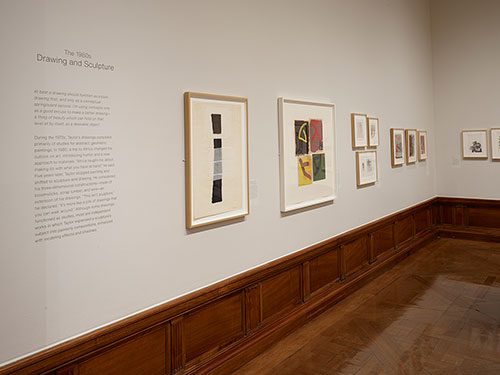At best a drawing should function as a pure drawing first, and only as a conceptual springboard second. I’m using concepts only as a good excuse to make a better drawing— a thing of beauty which can hold on that level all by itself, as a desirable object.
During the 1970s, Taylor’s drawings consisted primarily of studies for abstract, geometric paintings. In 1980, a trip to Africa changed his outlook on art, introducing humor and a new approach to materials. “Africa taught me about making do with what you have at hand,” he said. Five years later, Taylor stopped painting and shifted to sculpture and drawing. He considered his three-dimensional constructions—made of broomsticks, scrap lumber, and wire—an extension of his drawings. “This isn’t sculpture,” he declared. “It’s more like a pile of drawings that you can walk around.” Although some drawings functioned as studies, most are independent works in which Taylor expanded a sculpture’s subject into painterly compositions, enhanced with modeling effects and shadows.
Plan your visit. 225 Madison Avenue at 36th Street, New York, NY 10016.
Plan your visit. 225 Madison Avenue at 36th Street, New York, NY 10016.

